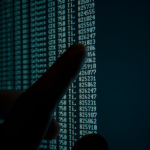Motion Capture Market and its burgeoning Market trends
Motion Capture Market is a promising market in the medium and long term. The study of real-time human motion simulation and training has drawn broad interest due to large applications in various areas of telepresence, augmented reality, and human-machine interface. Efforts have been made over the past several years to develop techniques for recreating three-dimensional models of human interaction or monitoring human/hand gestures from multiple camera angles. The two approaches are classified as one based on detailed 3D object recreation or human segmentation, and the second requires real-time 3D human motion detection without clear or precise 3D human model recreation.
According to the market database, the technology’s system’s sensing component requires calculating some aspect of the motion. A wide range of sensors, such as a basic potentiometer or an array of sophisticated video cameras, may do this. In theory, it is possible to store or use the sensor data directly. Market research tools state that this data is rarely significant in itself, however, it usually gives sensor-specific calculations, such as potentiometer resistance or camera pixel color detail. As a result, the computing component of this technology’s device converts the raw sensor data into meaningful information that more specifically defines the action. Also, certain mechanisms provide motion data unique to the object that is being monitored, such as joint angles in the body of a human. The optimistic market outlook for this technology can be studied using Global Market Database. The cloud based market research platform provides a comparative market database for the growing market size.
Market Database for the Motion Computing and Sensors Market
Market research tools suggest that an accelerometer with a gyro makes use of IMU sensors that have rapidly penetrated this industry, but there is a contrast between calculating motion with a few sensors and recording a person in movement. According to market research tools, a tiny sensor has the potential to capture position information, but such sensors can be used as motion detectors unless it captures all of the body. The amount of detail and accuracy required by a motion capture user defines how the data is captured since each device has both the accuracy and versatility of the data capability and constraints. Some motion capture market-based technologies are intended for indoor use, but they have some efficient and suitable outdoor features. Capturing full-body motion requires the system to provide a controlled environment of adequate reliability to accurately capture data.
Data obtained from market research tools suggest that an increased number of individuals have been involved in outdoor sporting and recreational activities in past years. Additionally, the cartoon animation production and sports equipment industry has expanded rapidly. In the golf and tennis fields, many such phenomena are especially apparent. The market dynamics for this sector can be studied using Global Market Database. The market research tool provides relevant market information as per the client’s requirement.
As per the market database, not only do young people continue to enjoy their ordinary life, but by constantly tracking their health conditions, many older people are eager to prolong their active and responsible lives.
There is a wide range of technologies for motion capturing systems. At extremely high sample speeds, the most developed technologies are capable of monitoring motion with very high accuracy. The movie and game industry accounts for a huge segment of the end-users for this market. The technology is used to render life-like simulations and researchers who learn biomechanics for rehabilitation and sports applications. Low-cost sensor devices that most consumers use every day on their smartphones, tablets, game controllers, and so on are widespread at the other end of the spectrum. Free market research tool, Global Market Database can be used to understand the ten year market forecast of the motion capture market.
This technology has been a standard feature of modern filmmaking, the demand for the motion capture market has been fuelled by the media and television industry. The advancement is due to the growing adoption of streaming services, live events, and gaming 3D motion capture systems. The media and entertainment industry has had a strong share of the motion capture market due to the quick and real-time implementation of 3D motion capture technologies for developing and animating new characters and models in games and movies. The growing technology based segments that have increased the demand for motion sensors as a technology can be studied using Global Market Database. The market research tool studies the high growth markets and provides its drivers, restraints as well as challenges.
After the public release of King Kong in 2006, the term Performance Capture was widely popularized by Andy Serkis and rose in general recognition after the 2009 release of AVATAR by James Cameron. Performance Capture is primarily the process of capturing the speech, body movements, and facial expression of an actor at once and in complete synchronization. Previously, an actor performing would not have facial expressions, instead, it would be applied later, many times by an entirely different actor, or sometimes it would have no facial expressions at all. The combination of both these recordings and the more film-like processes onset is what separates a performance capture shot using this technology. Once accessible only at studios such as Giant or WETA, high-end games studios are increasingly embracing these innovations and activities. Market research tools like Global Market Database can be used to study the market penetration for the Motion sensors market within the Gaming sector.
Impact of Industry 4.0 on the Motion Sensors Market
Industry 4.0’s exponential technical developments have opened a whole new opportunity for innovative manufacturing processes that need innovative sensing solutions for their implementation. In automotive environments, sensors that capture motion, such as visual cameras and inertial measurement devices, are commonly used to assist robots, additive manufacturing, teleworking, and human safety solutions. The construction industry has most commonly embraced this technology, followed by solutions for developing automated robots, automobile and bicycle manufacturing, and the agriculture field. The market forecast for Industry 4.o can also be understood using the free market research tool, Global Market Database.


